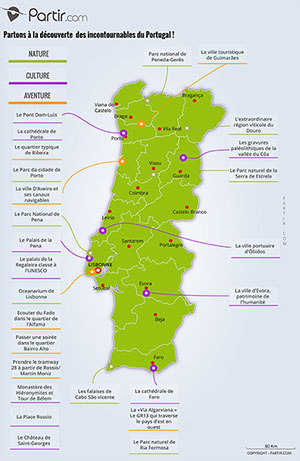Porto: 10 must-see attractions
Tourist attractions
Places to visit in Porto
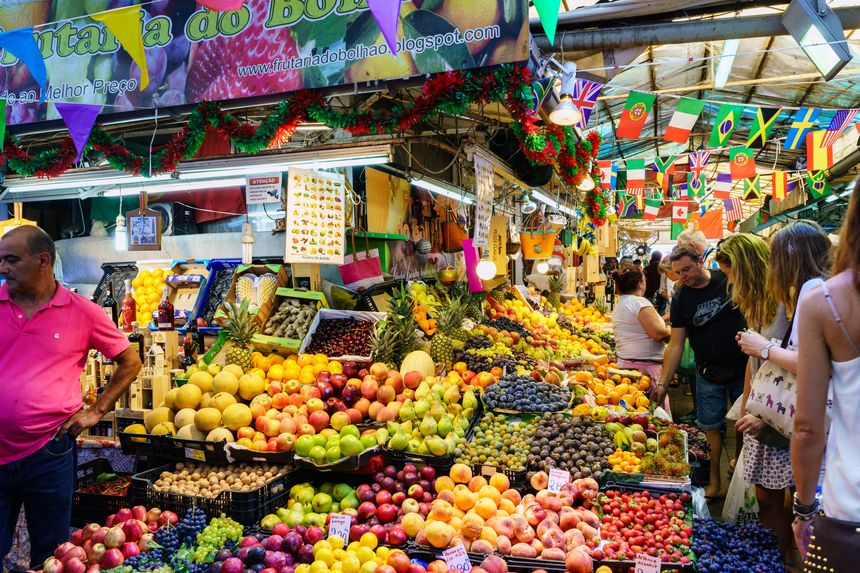
Bolhão Market
The Bolhão market: Located in a huge Neoclassical building dating back to 1914, with a central courtyard and two floors, the halls entice you to taste the country's culinary specialities. Fruit and vegetable stalls, butcher and fish shops, all the fresh products can be found in this authentic place where a traditional atmosphere prevails. If you want to discover the real Porto, this is the place to come for a walk. The market is undergoing renovation until 2019.
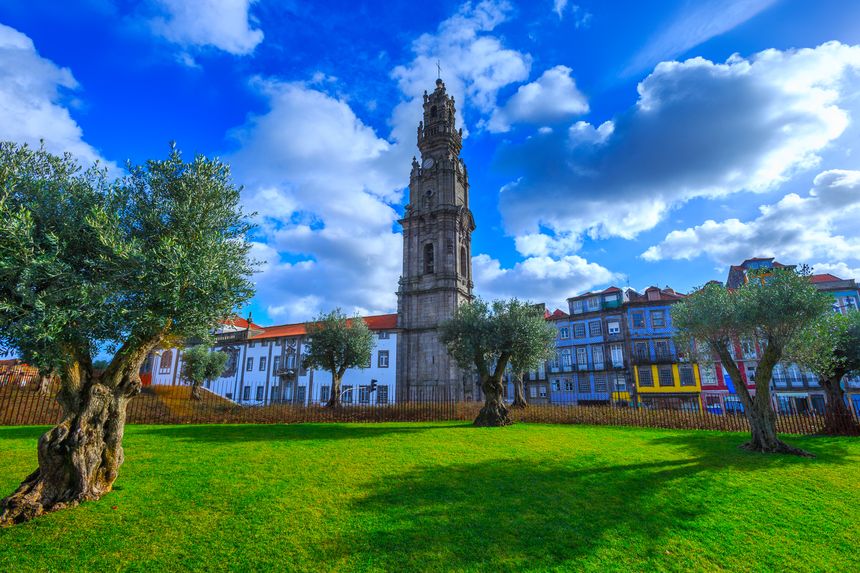
The church of Clerigos and its tower
A very beautiful 18th-century Baroque church built in the centre of Porto by the architect Nasori. Its 75 metres high tower makes it the highest point of the city. After climbing more than 220 steps, you will not only have a breathtaking but well deserved panoramic view of the whole city.
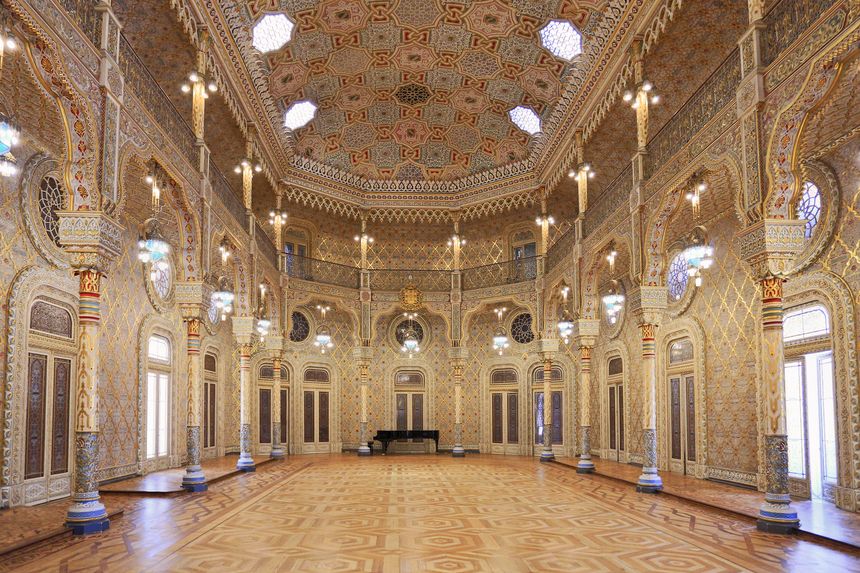
The Palacio da Bolsa
The Palacio da Bolsa was built between 1842 and 1910. The gigantic and splendid monument of Neo-classical style was at first the Headquarters of the Traders association of the city and is nowadays the Chamber of Commerce of Porto. The interior of the building is beautifully decorated which is a contrast to the rather austere exterior. To begin with you can visit the large inner courtyard called the World Court, with its high windows and superb skylight, you can then take a big granite staircase to reach the luxurious halls, notably the Golden room and the famous Moorish salon covered with approximately 20 kilograms of gold, decorated with patterns from the Alhambra of Granada.
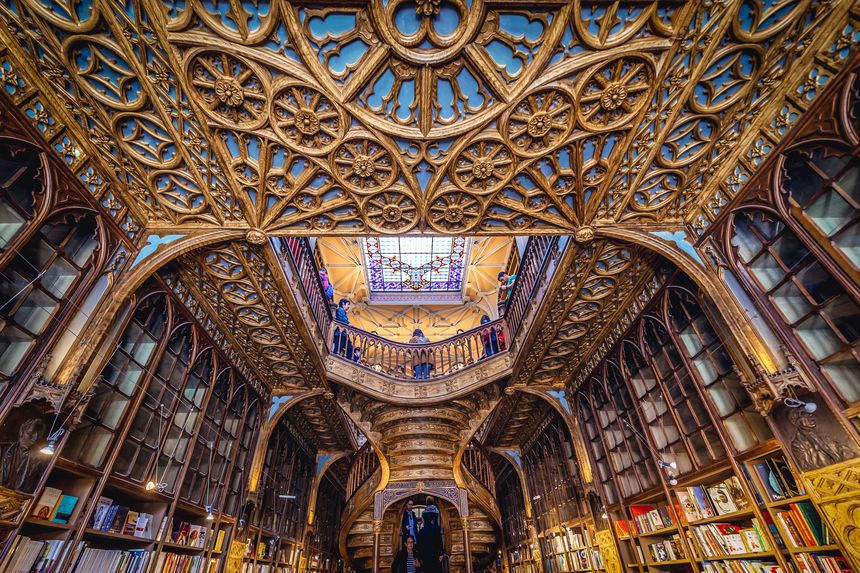
Lello Library
Lello library: a superb Neo-Gothic façade and an even more impressive interior! When you dip into into the library, you'll feel like a time traveller. Woodwork, stained-glass windows, thousands of books... you're without any doubt in a temple of literature. And what about its sumptuous and imposing wooden stair-case, beautifully carved, such a marvel! This magical place inspired J.K Rowling for her first Harry Potter book when she was teaching in Porto from 1991 to 1993.
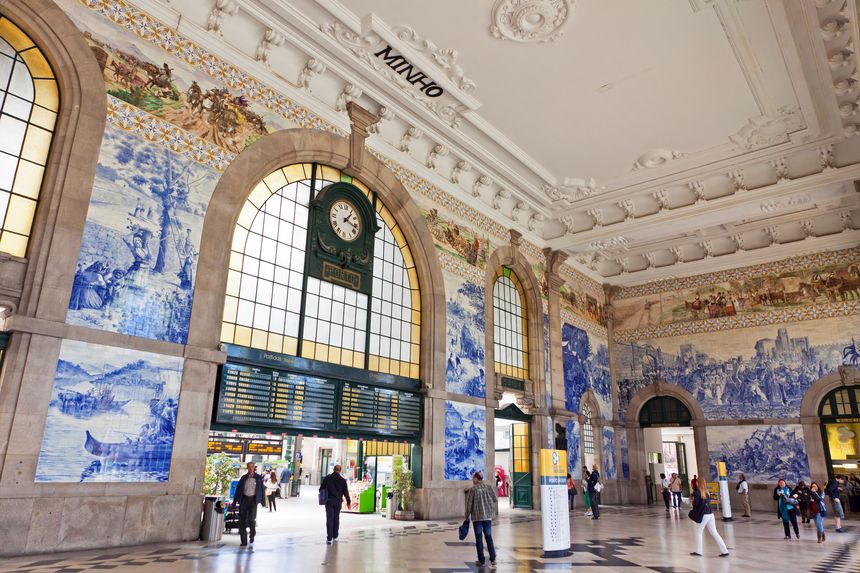
Porto-São Bento train station
The train station of Porto-São Bento is situated in the centre of Porto, the station is a required passage during your visit to Porto. Its hall is decorated with more than 20,000 Azulejos, these famous earthenware tiles made in Portugal and created by Jorge Colaço in 1930. They depict the history of Portugal by little sceneries. Look up and you will see the blue Azulejos a frieze of coloured ceramic tiles representing the evolution of the transportation systems in Portugal.
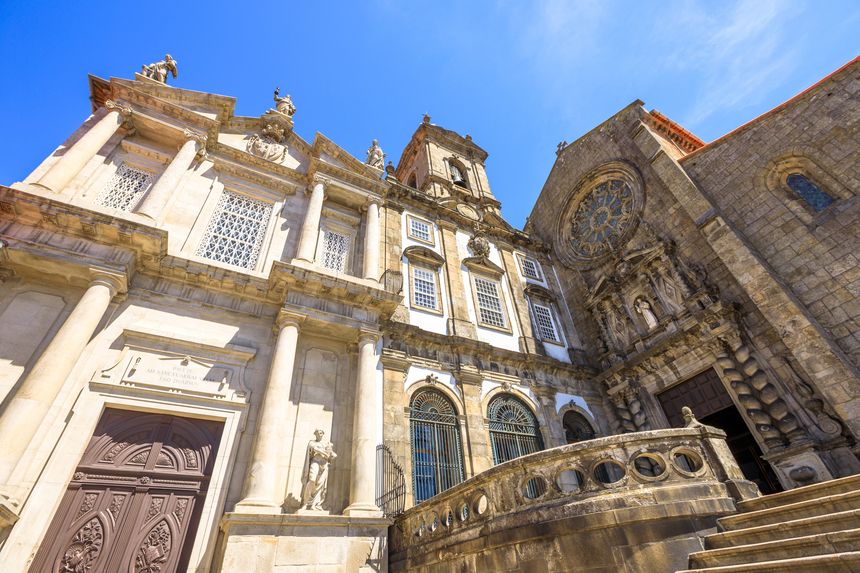
The Church of São Francisco
If you can only see one single Church in Porto, it would have to be São Francisco. Situated on the Dom Henrique square, its Gothic style construction dates back to the 14th century and is now considered as one of the finest churches of the country. The luxurious naves are an eye-catcher inside the church, because they are decorated with rich ornaments of wood, gilding and the magnificent Jesse Tree, a wooden sculpture representing Jesus' genealogy to the world.
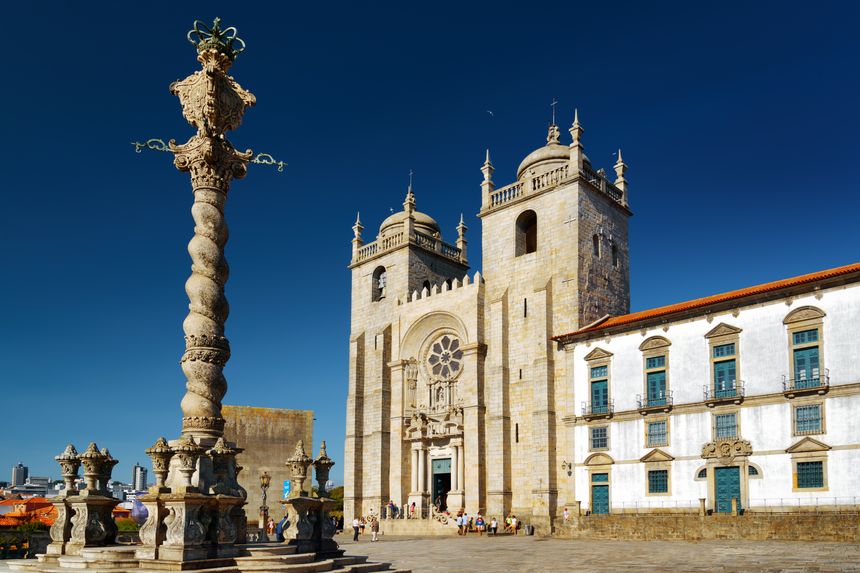
The Cathedral
From the medieval square of Ribeira, take the small Medieval alleyways and stairs to reach the imposing Cathedral, Porto's most important religious monument. From its square, you will have a breathtaking view of the Douro and its quays. Built in the 12th century, the Cathedral has undergone numerous reconstructions and modifications over the centuries, which explains its different architectural styles. At the entrance to the Cathedral, on the right, there is a door that gives access to the cloister with its Gothic arches. For an entrance fee of a few euros, you can admire the Azulejos representing religious scenes that adorn the tower of the building. Don't miss out on the Treasures Room with its showcases featuring gold embroidered chasubles and a beautiful collection of religious objects. A staircase leads you to the terrace where you can reach the Chapter house with its superb ceiling paintings.
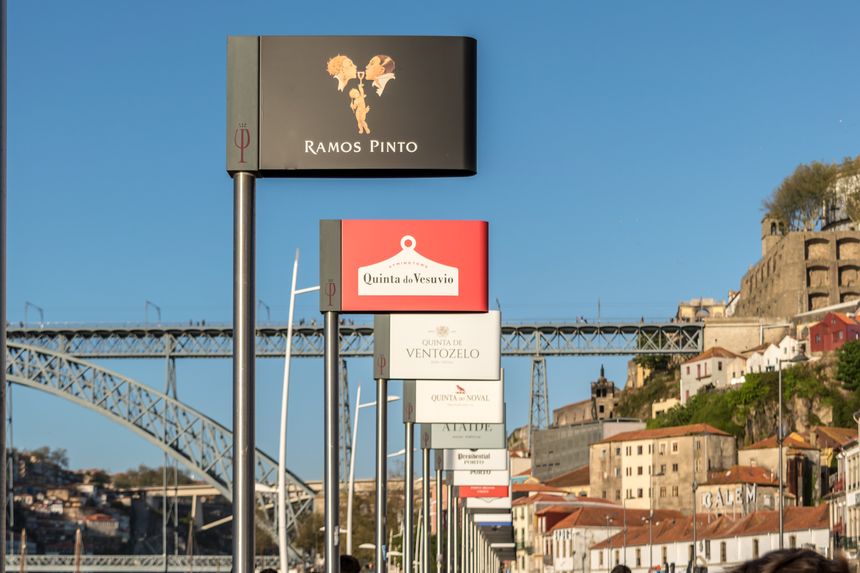
Port wine tasting in the cellars of Vila Nova de Gaia
It would be a pity to come to Porto without visiting the cellars located in Vila Nova de Gaia. On the Avenue de Diogo Leite, along the Douro, you will find the most famous cellars. You can visit them accompanied by a guide who will give you all the explanations concerning the elaboration of the wine. The visit ends with a tasting, long awaited by the visitors. After your tasting, don't hesitate to stroll along the quay along the Douro River with a beautiful view of Porto, the ideal place to take a picture of the houses with their colourful façades on the Ribeira.
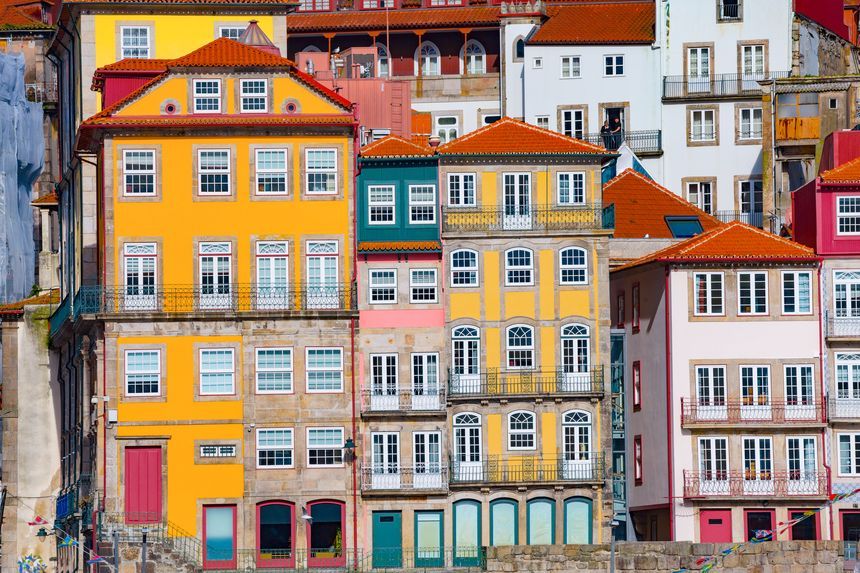
Historic district of Ribeira
The historic district of Ribeira, a UNESCO World Heritage Site, is the heart of Porto. Close to the river, it was here that the city's economic activity took place. Nowadays, it's a touristic district with its typical colourful facades that have made Porto so famous. It is nice to stroll through its small streets to reach the Douro where you can board for a cruise of 1 to 2 hours. You will pass under the famous Dom Luis I metal bridge designed by one of Gustave Eiffel's students which enables you to reach Vila Nova de Gaia on foot, by metro or by car. You will cross other bridges such as the one of Queen Maria Pia which was created for her by Gustave Eiffel, the Infanta bridge and the Arrabida bridge which is the closest to the sea. In the evening, the Ribeira quay bustles with life with its numerous restaurants, bars and sometimes improvised concerts.
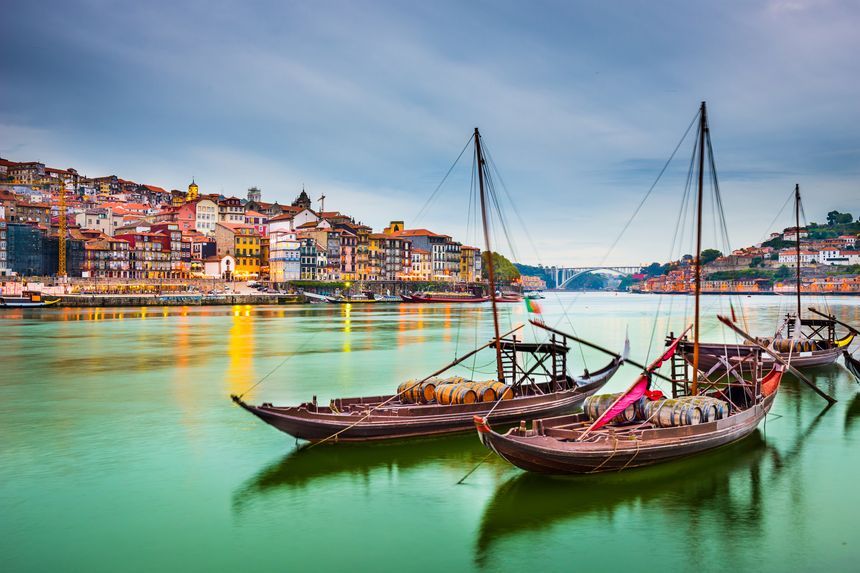
The Douro
The Douro is the river that flows through the city. It is crossed by several bridges, offering panoramic views of Porto. The most famous one is the Dom Luis I bridge, a two-level metal bridge designed by one of Gustave Eiffel's students to connect to the old Port to Vila Nova de Gaia, famous for its wine cellars. Other bridges also represent an architectural interest such as Queen Maria Pia, designed by Gustave Eiffel or the Infanta Bridge. Several boat companies that you can find on the quay of Ribeira or in Vila Nova de Gaia offer excursions of less than an hour to discover its famous bridges and for an atypical view of the banks and the city of Porto. On the Douro, you'll meet a few boats loaded with barrels that no longer sail but which are a reminder of the wine cellars of Vila Nova de Gaia. If you have an extra day, you can go to Régua by boat in the Douro valley where you can visit and taste the wines.
You may also like
-
Flights to Portugal
All you need to know before buying your plane ticket
-
Tourist maps
Must-see and secret places chosen by our experts from Portugal.
-
Hotel or vacation rental?
Find your dream accommodation in Portugal at the best price...
-
When to go?
Be sure to visit Portugal at the best time of year!
and why not...
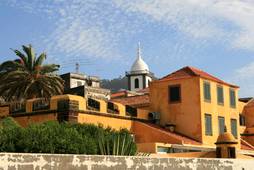 Madeira
Madeira


